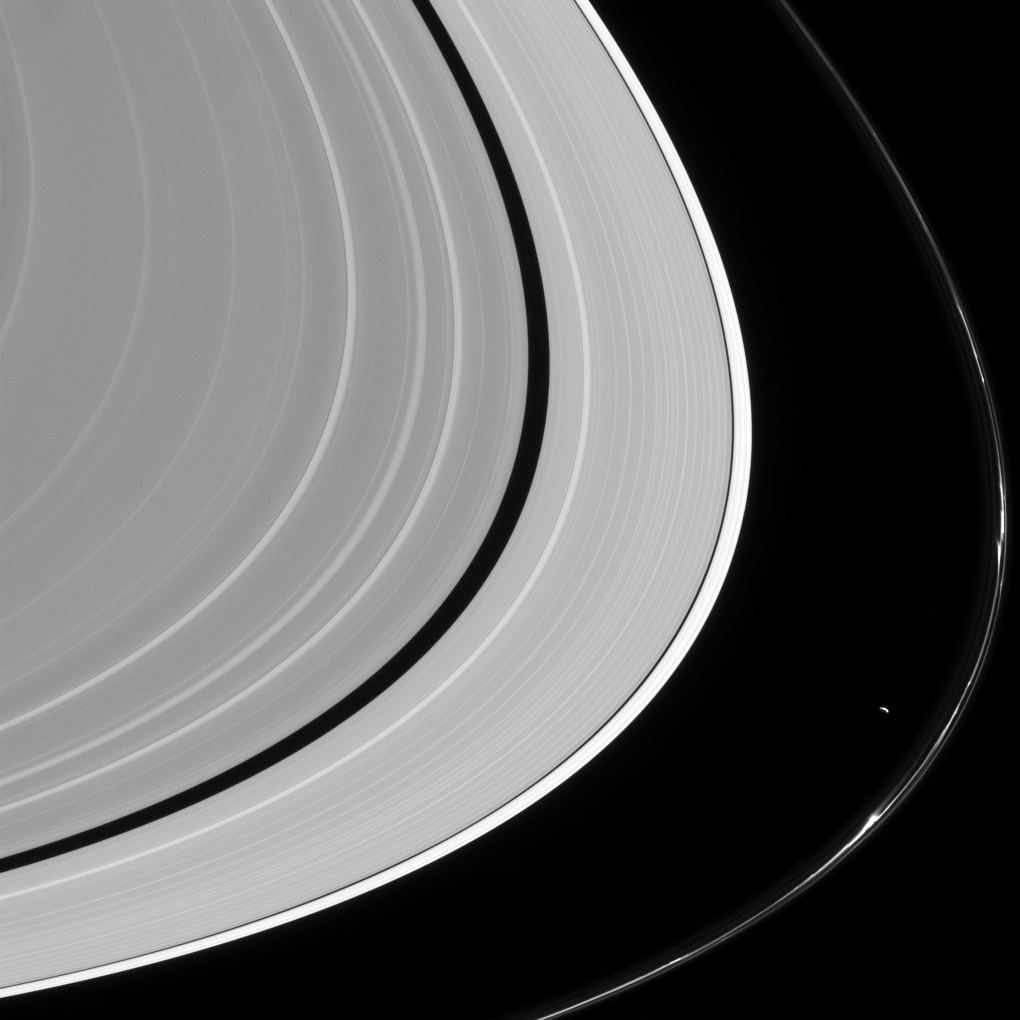Sculptor and His Work

| PIA Number | PIA20483 |
|---|---|
| Language |
|
Most planetary rings appear to be shaped, at least in part, by moons orbiting their planets, but nowhere is that more evident than in Saturn's F ring. Filled with kinks, jets, strands and gores, the F ring has been sculpted by its two neighboring moons Prometheus (seen here) and Pandora. Even more amazing is the fact that the moons remain hard at work reshaping the ring even today.
Prometheus (53 miles, or 86 kilometers across) shapes the F ring through consistent, repeated gravitational nudges and occasionally enters the ring itself (clearing out material and creating a "gore" feature, see F Ring's Bright Core Clumps). Although the gravitational force of Prometheus is much smaller than that of Saturn, even small nudges can tweak the ring particles' orbits to create new patterns in the ring.
This view looks toward the sunlit side of the rings from about 12 degrees above the ring plane. The image was taken in visible light with the Cassini spacecraft narrow-angle camera on Feb. 21 2016.
The view was obtained at a distance of approximately 1.4 million miles (2.3 million kilometers) from Saturn and at a Sun-Saturn-spacecraft or phase angle of 105 degrees. Image scale is 9 miles (14 kilometers) per pixel.
The Cassini mission is a cooperative project of NASA, ESA (the European Space Agency) and the Italian Space Agency. The Jet Propulsion Laboratory, a division of the California Institute of Technology in Pasadena, manages the mission for NASA's Science Mission Directorate, Washington. The Cassini orbiter and its two onboard cameras were designed, developed and assembled at JPL. The imaging operations center is based at the Space Science Institute in Boulder, Colorado.
For more information about the Cassini-Huygens mission visit http://saturn.jpl.nasa.gov and http://www.nasa.gov/cassini. The Cassini imaging team homepage is at http://ciclops.org.
Credit: NASA/JPL-Caltech/Space Science Institute
